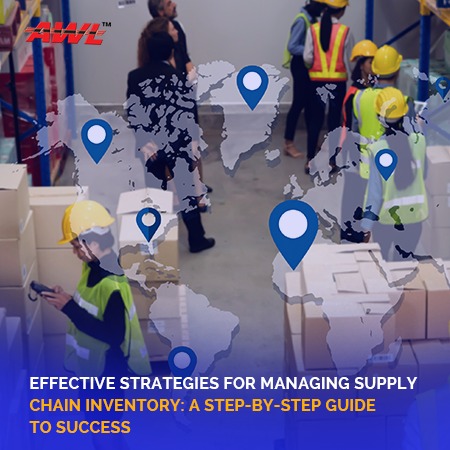

Effective inventory management is crucial for businesses that want to remain competitive and meet the demands of their customers. Inventory management involves the coordination and collaboration of different departments and stakeholders, such as procurement, production, sales, and finance, to ensure that inventory levels are optimised and aligned with business goals. Similarly, effective supply chain inventory management involves careful planning and execution. It requires businesses to set inventory goals, analyse demand, evaluate suppliers, optimise inventory levels, implement inventory management software, and monitor and adjust inventory levels.
These steps are essential to ensure that businesses can meet customer demand, minimise stockouts, reduce inventory costs, and improve customer service levels. By implementing effective inventory management strategies, businesses can optimise their supply chain, reduce costs, and improve their bottom line. AWL India, as a leading logistics and supply chain management company in India, can help businesses develop customised inventory management strategies that are tailored to their specific business needs.
We at AWL India understand the importance of managing supply chain inventory. Therefore, we have curated a list of the effective strategies that can help in managing supply chain inventory. In total there are around 6 strategies that we believe can help in efficiently managing supply chain inventory. Moreover, the list of the effective strategies is as follows:
Setting inventory goals is crucial in effective inventory management. Businesses need to define their desired outcomes and how they will measure success. Common inventory goals include reducing inventory costs, improving customer service levels, and minimising stockouts. Once businesses have identified their inventory goals, they can develop a plan to achieve them. This involves analysing demand, evaluating suppliers, optimising inventory levels, implementing inventory management software, and monitoring and adjusting inventory levels to ensure that they are aligned with their goals.
Analysing demand is crucial in effective inventory management. It involves understanding the demand for products and services and forecasting future demand. There are different methods for forecasting demand, such as historical data analysis, trend analysis, and market research. By analysing demand, businesses can determine how much inventory they need to keep on hand to meet customer demand and avoid stockouts. This helps businesses optimise inventory levels and avoid the costs of overstocking or understocking.
Evaluating suppliers is an essential step in effective inventory management. It involves assessing the reliability and performance of suppliers and identifying any potential risks. Businesses should consider factors such as lead times, quality, pricing, and delivery times. By evaluating suppliers, businesses can identify opportunities to optimise their supply chain and reduce costs. They can also identify alternative suppliers or negotiate better terms with existing suppliers to improve their inventory management and supply chain efficiency. This helps businesses minimise inventory costs, reduce stockouts, and improve customer service levels.
The fourth step is to optimise inventory levels. This involves finding the right balance between holding too much inventory and not enough inventory. You can use various inventory management techniques, such as ABC analysis, economic order quantity (EOQ), and just-in-time (JIT) inventory, to optimise your inventory levels. By optimising your inventory levels, you can reduce costs and improve customer service levels.
The fifth step is to implement inventory management software. This involves using technology to automate and streamline inventory management processes. Inventory management software can help you track inventory levels, forecast demand, manage suppliers, and optimise inventory levels. By implementing inventory management software, you can improve the accuracy and efficiency of your inventory management processes.
The final step is to monitor and adjust inventory levels. This involves regularly reviewing your inventory levels and making adjustments as needed. You should monitor key performance indicators (KPIs), such as inventory turnover ratio and days of inventory on hand, to ensure that your inventory levels are in line with your inventory goals. By monitoring and adjusting your inventory levels, you can ensure that you are meeting customer demand and avoiding stockouts.
Effective supply chain inventory management is critical for businesses that want to remain competitive and meet the demands of their customers. By following the six steps outlined in this blog, you can develop a successful inventory management strategy that will help you achieve your inventory goals. Whether you are looking to reduce costs, improve customer service levels, or minimise stockouts, these strategies can help you optimise your supply chain and achieve success. As a leading logistics and supply chain management company in India, AWL India is committed to providing innovative solutions to our clients. Our team of experts can help you develop a customised inventory management strategy that is tailored to your business needs. Contact us today to learn more about how we can help you achieve your inventory goals.

